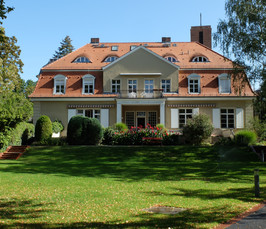In Silico Design of Single-Atom- and Highly-Dilute-Alloy Catalysts: Success Stories and Opportunities for Innovation
- TH Department Online Seminar
- Date: Mar 3, 2022
- Time: 02:00 PM - 03:00 PM (Local Time Germany)
- Speaker: Professor Michail Stamatakis
- Department of Chemical Engineering, University College London, UK
- Location: https://zoom.us/j/95870733501?pwd=U2hta1N2QmN5RGQzS1lWTVNCZkpUQT09
- Room: Meeting ID: 958 7073 3501 | Passcode: 854238
- Host: TH Department

In this talk, we will showcase the role of such fundamental theoretical studies towards unravelling the catalytic properties of single-atom-alloys (SAAs) and highly-dilute-alloys (HDAs) for challenging chemistries pertinent to alkane valorisation and emissions control technologies. In SAAs, a dopant metal (typically from the Pt group) is alloyed into a host metal (e.g. Cu) at such high dilutions that it remains atomically dispersed, forming special types of sites which promote high activity, selectivity and stability. Thus, within the context of SAA catalysis, we will focus on methane conversion to higher hydrocarbons as well as propane dehydrogenation to propene, and will present density functional theory calculations and kinetic Monte Carlo simulations that demonstrate the catalytic potential of SAAs. Other chemical conversions necessitate larger dopant clusters, and, in this respect, we will discuss our theoretical results on the CO oxidation and NOx reduction chemistries on various HDA ensembles. Crucially, much of our theoretical research has motivated and guided experimental studies, in which our collaborators validated our theoretical predictions. This fruitful synergy between theory and experiments underscores the timeliness of the “rational catalyst design” approach and highlights the exciting opportunities for the development of innovative solutions in the catalysis field.